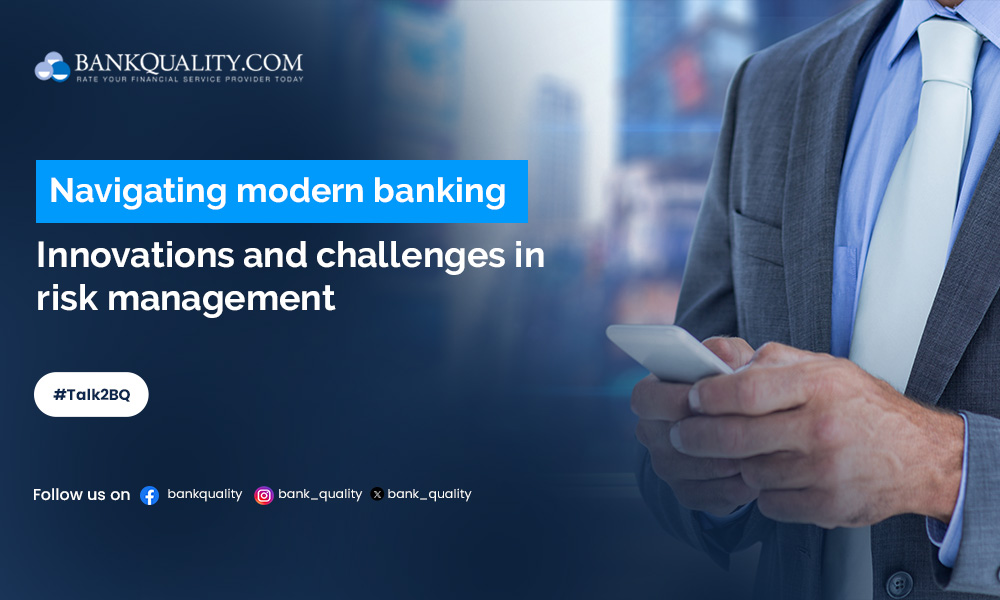
In today's fast-changing banking environment, risk management has become more intricate. The changing financial markets, regulations, and technological advancements require sophisticated models and strategies to effectively manage risks.
Risk management in contemporary banking
Modern banking is defined by quick technological progress and increased regulatory oversight. As banks adopt digital transformation, they encounter fresh risks like cyber threats, data breaches, and operational disruptions. Deloitte predicts that global cybercrime expenses will hit $10.5 trillion per year by 2025, demonstrating the urgent importance of strong cybersecurity measures in the banking sector.
Regulators worldwide are strengthening their frameworks to maintain financial stability. The Basel III rules, implemented after the financial crisis of 2008, focus on stricter capital requirements and enhanced risk management techniques. These rules require banks to implement advanced risk evaluation models and maintain greater capital reserves to cover potential losses.
New methods for managing risks
Big data, advanced analytics, and machine learning (ML)
Banks are increasingly using these technologies to improve risk assessment and prediction by analysing large volumes of data to identify patterns and anomalies, making proactive risk management easier. JPMorgan Chase, for example, employs ML algorithms to pinpoint fraudulent transactions, leading to a notable decrease in fraud losses.
Blockchain technology
The unchangeable and open ledger system of blockchain provides a groundbreaking method of handling risks involving fraud, identity theft, and transaction integrity. Blockchain improves the transparency and traceability of financial transactions by providing a decentralised and secure platform.
Scenario analysis and stress testing
In risk management today, it is essential to conduct thorough scenario analysis and stress testing in order to assess a bank's ability to withstand extreme circumstances. The European Banking Authority (EBA) regularly carries out stress tests on European banks to evaluate their ability to endure economic shocks. These assessments replicate unfavourable situations to verify that banks are able to withstand significant financial challenges without affecting stability.
Trends at both regional and global levels
In the United States, the Federal Reserve requires thorough risk management frameworks, such as regular stress testing and capital planning. American banks are leading in the implementation of artificial intelligence (AI) and machine learning (ML) for managing risks. McKinsey's study reveals that American banks investing in AI-based risk management solutions have seen a 20–30% reduction in operational risks.
European banks, meanwhile, must comply with strict regulatory demands set forth by Basel III and the Capital Requirements Directive (CRD IV). The emphasis of the EBA on transparency and standardised risk assessment models has encouraged European banks to implement sophisticated risk management technologies. An example of this is when HSBC uses predictive analytics to handle credit risks, enhancing their decision-making procedures.
In the Asia-Pacific region, digital transformation is happening rapidly as banks adopt fintech innovations to improve their risk management practices. In China, the integration of AI into banking has transformed risk evaluation, allowing banks to quickly review loan requests while reducing credit risks. According to a PwC report, Chinese banks have seen a 50% decrease in default rates when using AI technology for credit scoring.
Challenges and opportunities ahead
Even with improvements in technology, banks still encounter major hurdles in managing risks. Merging new technologies with older systems, overseeing data privacy, and guaranteeing adherence to regulations are crucial challenges. Furthermore, the growing complexity of financial tools and worldwide interconnectivity necessitate the continuous development of risk management methods.
Further incorporating AI, ML, and blockchain technologies is key to the future of risk management in the banking industry. These new developments offer improved predictive precision, operational effectiveness, and security. Banks, regulators, and fintech companies need to work together in order to create standardised frameworks and effectively tackle emerging risks.
Traditional risk management practices in the banking sector are currently at a turning point, as they need to adapt to new challenges in the modern era. Banks can successfully manage risks by adopting new technologies and following strict regulatory guidelines. Continuous adjustment and improvement of risk management tactics are essential to maintaining financial stability and resilience in a volatile worldwide market.